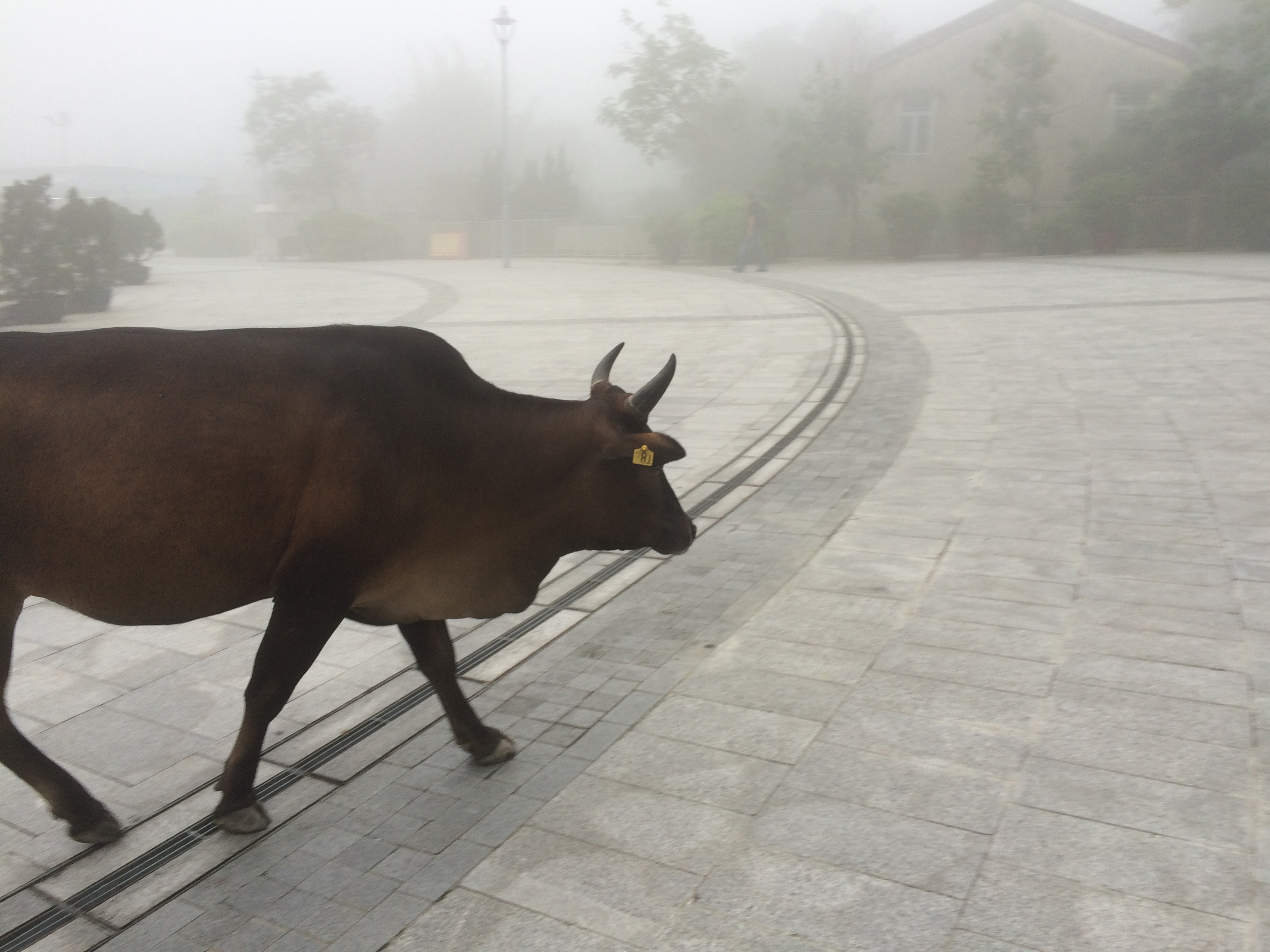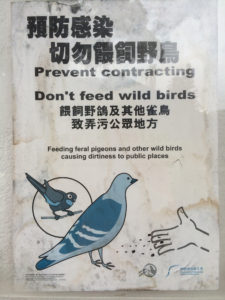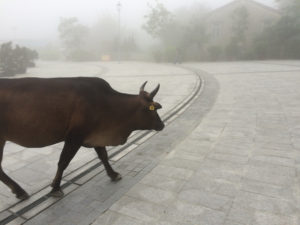
The wild side of Hong Kong

Hong Kong is a noisy metropolis, but bird song fills the air in the Yuen Po Bird Garden in the Mong Kok district. The garden features stalls selling songbirds, carved wooden cages, and bird food including lots of live creepy crawlies. In American and European pet stores, birds are also commonly for sale, but they tend to be brightly coloured parakeets, budgies, or parrots. At Yuen Po, most of the birds were sandy brown or black and white. They were not being sold for their feathers as much as for their songs.
The bird species were almost all local to Hong Kong, like the oriental magpie-robin and red-whiskered bulbul. They were the same birds we saw while walking in the Chinese Garden of Nan Lian and the mountain forests near Ngong Ping. While we were at the market, we even saw one seller catch a bird that had landed nearby and swiftly stuff it into a cage. It would seem that these birds are caught and then sold, rather than bred for the purpose.
 In this context, one sign caught my eye. “Don’t feed wild birds,” it stated, discouraging the feeding of “feral pigeons and other wild birds” in order to prevent the spread of disease and “dirtiness”. There is reason to be cautious with disease — in 2012, the market was shut down for three weeks after avian influenza virus was detected in some birds for sale. Yet, the distinction between “wild birds” and the ones in the cages would seem extraordinarily arbitrary in this case. In one sense, the caged birds have been domesticated–they have been placed under the care and in the house of humans–making them unwild, but they have not been selected, bred or controlled. Is a bird in a cage really that much cleaner than the bird outside of it? Based on what I saw in the stalls, I doubt it.
In this context, one sign caught my eye. “Don’t feed wild birds,” it stated, discouraging the feeding of “feral pigeons and other wild birds” in order to prevent the spread of disease and “dirtiness”. There is reason to be cautious with disease — in 2012, the market was shut down for three weeks after avian influenza virus was detected in some birds for sale. Yet, the distinction between “wild birds” and the ones in the cages would seem extraordinarily arbitrary in this case. In one sense, the caged birds have been domesticated–they have been placed under the care and in the house of humans–making them unwild, but they have not been selected, bred or controlled. Is a bird in a cage really that much cleaner than the bird outside of it? Based on what I saw in the stalls, I doubt it.
The strange contradictions of labelling animals as wild or not struck me again when I got off the Ngong Ping cable car at the top of Lantau island. One of the signs greeting the visitors warned them not to “feed the wildlife” illustrated with a picture of a cow. I thought this was odd but near the Po Lin monastery I saw another sign that further explained that there were “feral cattle and buffalo” in the area. Being from Texas, I’m well aware that cattle can be mean so I didn’t take the sign lightly.

On the signage, these animals were described as “wildlife” and “feral”. Feral applies to an animal that is living in a wild population but is descended from domesticated animals. It’s a complicated and contentious notion (environmental historian Libby Robin is currently working on a book Fear of Ferals) because it blurs boundaries between wild and domestic. Based on the naming, I assumed that these animals were descendants of domesticated buffalo and cattle that now roamed the island.

When one decided to make a bee-line path without flinching through the spot I was standing on with my daughter, we made a quick move out of the way. As it passed, I noticed that the cow had a numbered ear tag. Does this mean it wasn’t wild after all?
It turns out that there has been considerable controversy surrounding whether or not the Lantau feral cattle and buffalo should be allowed to remain alive. Groups like the Lantau Buffalo Association consider the animals part of the island’s nature and are working to manage the human-animal conflicts. There has been an active sterilisation program to limit the population of these feral animals, and there are managers who keep track of the herds. The ear tag I saw up close is a sign of active management of the animals, possibly even meaning that the animal was sterilised. These cows may roam, but they doesn’t mean they are allowed to be completely wild. Management still domesticates them.
Caged birds and feral cows in Hong Kong. They both breach the divides between wild and domestic. They are both, and they are neither. They make us question labels.

